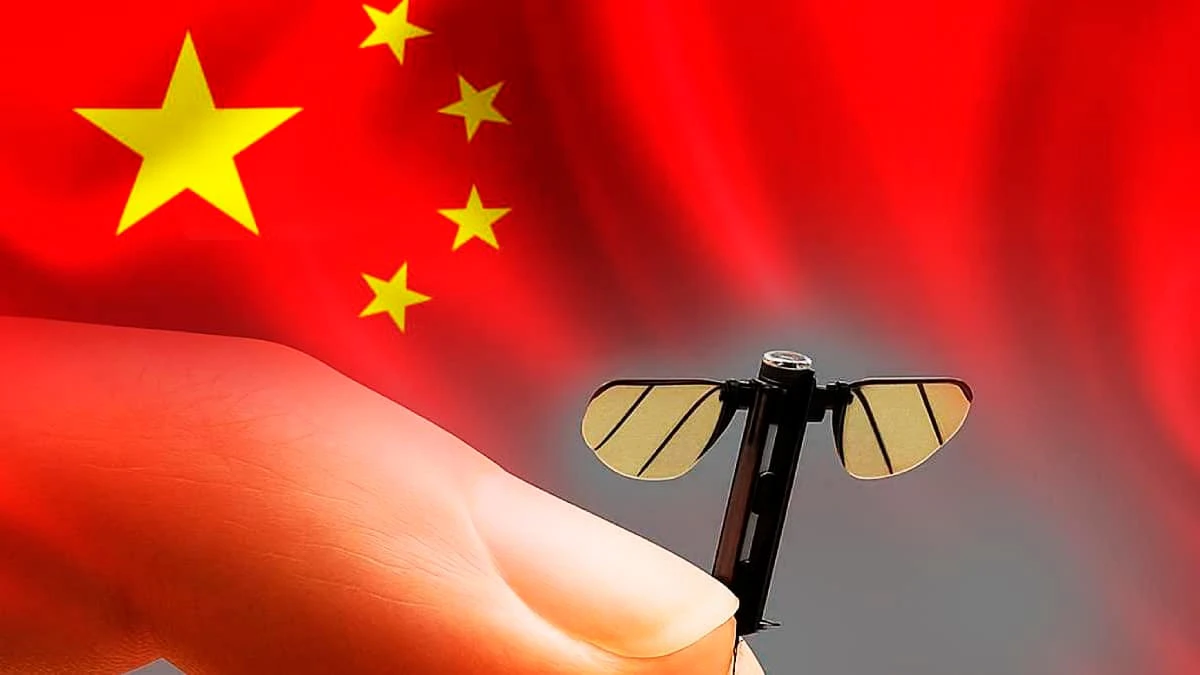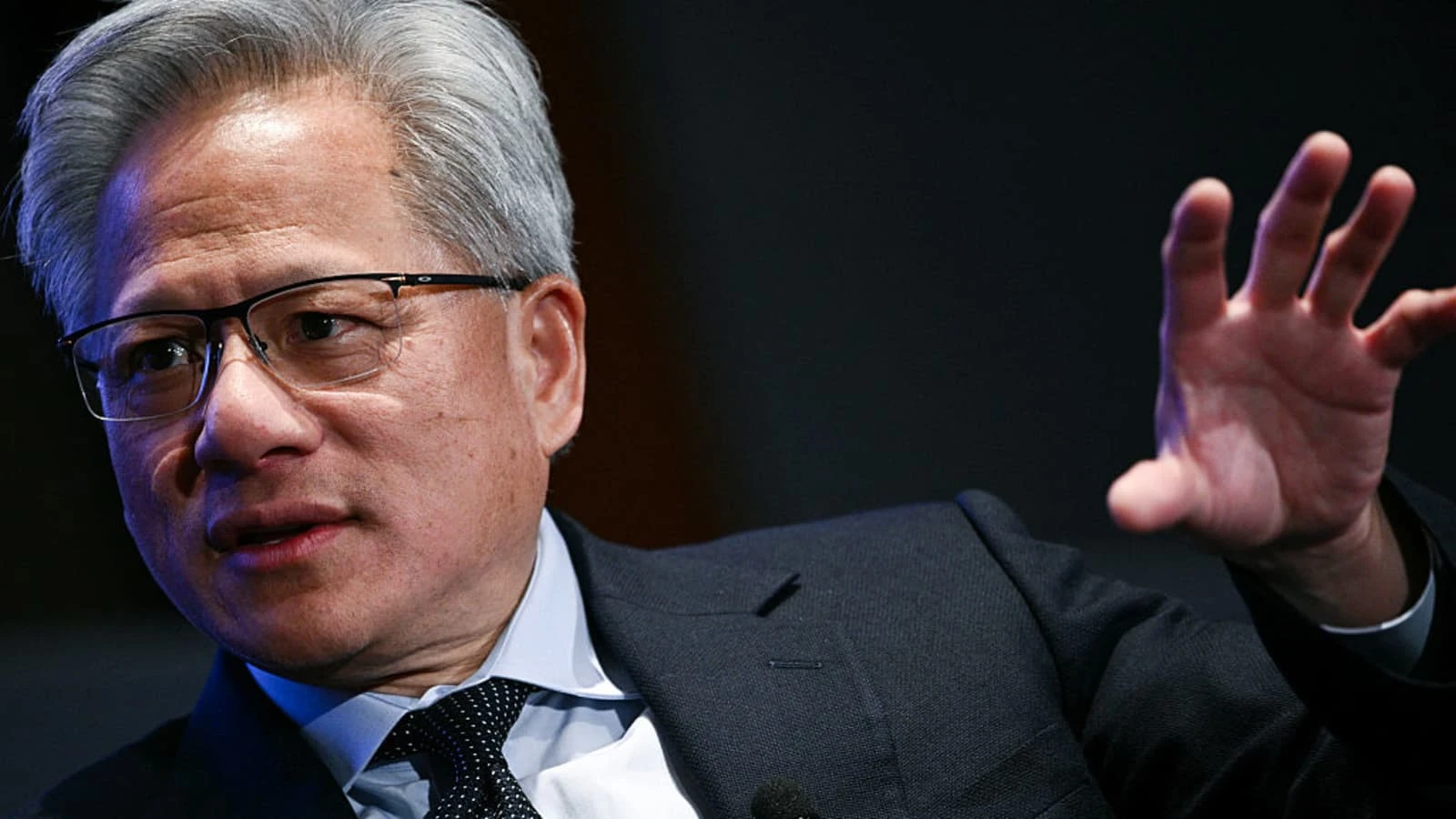Trump’s military parade is a warning
Donald Trump’s military parade in Washington this weekend — a show of force in the capital that just happens to take place on the president’s birthday — smacks of authoritarian Dear Leader-style politics.Yet as disconcerting as the imagery of tanks rolling down Constitution Avenue will be, it’s not even close to Trump’s most insidious assault on the US military’s historic and democratically essential nonpartisan ethos.In fact, it’s not even the most worrying thing he’s done this week.On Tuesday, the president gave a speech at Fort Bragg, an Army base home to Special Operations Command. While presidential speeches to soldiers are not uncommon — rows of uniformed troops make a great backdrop for a foreign policy speech — they generally avoid overt partisan attacks and campaign-style rhetoric. The soldiers, for their part, are expected to be studiously neutral, laughing at jokes and such, but remaining fully impassive during any policy conversation.That’s not what happened at Fort Bragg. Trump’s speech was a partisan tirade that targeted “radical left” opponents ranging from Joe Biden to Los Angeles Mayor Karen Bass. He celebrated his deployment of Marines to Los Angeles, proposed jailing people for burning the American flag, and called on soldiers to be “aggressive” toward the protesters they encountered.The soldiers, for their part, cheered Trump and booed his enemies — as they were seemingly expected to. Reporters at Military.com, a military news service, uncovered internal communications from 82nd Airborne leadership suggesting that the crowd was screened for their political opinions.“If soldiers have political views that are in opposition to the current administration and they don’t want to be in the audience then they need to speak with their leadership and get swapped out,” one note read.To call this unusual is an understatement. I spoke with four different experts on civil-military relations, two of whom teach at the Naval War College, about the speech and its implications. To a person, they said it was a step towards politicizing the military with no real precedent in modern American history.“That is, I think, a really big red flag because it means the military’s professional ethic is breaking down internally,” says Risa Brooks, a professor at Marquette University. “Its capacity to maintain that firewall against civilian politicization may be faltering.”This may sound alarmist — like an overreading of a one-off incident — but it’s part of a bigger pattern. The totality of Trump administration policies, ranging from the parade in Washington to the LA troop deployment to Secretary of Defense Pete Hegseth’s firing of high-ranking women and officers of color, suggests a concerted effort to erode the military’s professional ethos and turn it into an institution subservient to the Trump administration’s whims. This is a signal policy aim of would-be dictators, who wish to head off the risk of a coup and ensure the armed forces’ political reliability if they are needed to repress dissent in a crisis.Steve Saideman, a professor at Carleton University, put together a list of eight different signs that a military is being politicized in this fashion. The Trump administration has exhibited six out of the eight.“The biggest theme is that we are seeing a number of checks on the executive fail at the same time — and that’s what’s making individual events seem more alarming than they might otherwise,” says Jessica Blankshain, a professor at the Naval War College.That Trump is trying to politicize the military does not mean he has succeeded. There are several signs, including Trump’s handpicked chair of the Joint Chiefs repudiating the president’s claims of a migrant invasion during congressional testimony, that the US military is resisting Trump’s politicization.But the events in Fort Bragg and Washington suggest that we are in the midst of a quiet crisis in civil-military relations in the United States — one whose implications for American democracy’s future could well be profound.The Trump crisis in civil-military relations, explainedA military is, by sheer fact of its existence, a threat to any civilian government. If you have an institution that controls the overwhelming bulk of weaponry in a society, it always has the physical capacity to seize control of the government at gunpoint. A key question for any government is how to convince the armed forces that they cannot or should not take power for themselves.Democracies typically do this through a process called “professionalization.” Soldiers are rigorously taught to think of themselves as a class of public servants, people trained to perform a specific job within defined parameters. Their ultimate loyalty is not to their generals or even individual presidents, but rather to the people and the constitutional order.Samuel Huntington, the late Harvard political scientist, is the canonical theorist of a professional military. In his book The Soldier and the State, he described optimal professionalization as a system of “objective control”: one in which the military retains autonomy in how they fight and plan for wars while deferring to politicians on whether and why to fight in the first place. In effect, they stay out of the politicians’ affairs while the politicians stay out of theirs.The idea of such a system is to emphasize to the military that they are professionals: Their responsibility isn’t deciding when to use force, but only to conduct operations as effectively as possible once ordered to engage in them. There is thus a strict firewall between military affairs, on the one hand, and policy-political affairs on the other.Typically, the chief worry is that the military breaches this bargain: that, for example, a general starts speaking out against elected officials’ policies in ways that undermine civilian control. This is not a hypothetical fear in the United States, with the most famous such example being Gen. Douglas MacArthur’s insubordination during the Korean War. Thankfully, not even MacArthur attempted the worst-case version of military overstep — a coup.But in backsliding democracies like the modern United States, where the chief executive is attempting an anti-democratic power grab, the military poses a very different kind of threat to democracy — in fact, something akin to the exact opposite of the typical scenario.In such cases, the issue isn’t the military inserting itself into politics but rather the civilians dragging them into it in ways that upset the democratic political order. The worst-case scenario is that the military acts on presidential directives to use force against domestic dissenters, destroying democracy not by ignoring civilian orders, but by following them.There are two ways to arrive at such a worst-case scenario, both of which are in evidence in the early days of Trump 2.0.First is politicization: an intentional attack on the constraints against partisan activity inside the professional ranks.Many of Pete Hegseth’s major moves as secretary of defense fit this bill, including his decisions to fire nonwhite and female generals seen as politically unreliable and his effort to undermine the independence of the military’s lawyers. The breaches in protocol at Fort Bragg are both consequences and causes of politicization: They could only happen in an environment of loosened constraint, and they might encourage more overt political action if gone unpunished.The second pathway to breakdown is the weaponization of professionalism against itself. Here, Trump exploits the military’s deference to politicians by ordering it to engage in undemocraticactivities. In practice, this looks a lot like the LA deployments, and, more specifically, the lack of any visible military pushback. While the military readily agreeing to deployments is normally a good sign — that civilian control is holding — these aren’t normal times. And this isn’t a normal deployment, but rather one that comes uncomfortably close to the military being ordered to assist in repressing overwhelmingly peaceful demonstrations against executive abuses of power.“It’s really been pretty uncommon to use the military for law enforcement,” says David Burbach, another Naval War College professor. “This is really bringing the military into frontline law enforcement when. … these are really not huge disturbances.”This, then, is the crisis: an incremental and slow-rolling effort by the Trump administration to erode the norms and procedures designed to prevent the military from being used as a tool of domestic repression. Is it time to panic?Among the experts I spoke with, there was consensus that the military’s professional and nonpartisan ethos was weakening. This isn’t just because of Trump, but his terms — the first to a degree, and now the second acutely — are major stressors.Yet there was no consensus on just how much military nonpartisanship has eroded — that is, how close we are to a moment when the US military might be willing to follow obviously authoritarian orders.For all its faults, the US military’s professional ethos is a really important part of its identity and self-conception. While few soldiers may actually read Sam Huntington or similar scholars, the general idea that they serve the people and the republic is a bedrock principle among the ranks. There is a reason why the United States has never, in over 250 years of governance, experienced a military coup — or even come particularly close to one.In theory, this ethos should also galvanize resistance to Trump’s efforts at politicization. Soldiers are not unthinking automatons: While they are trained to follow commands, they are explicitly obligated to refuse illegal orders, even coming from the president. The more aggressive Trump’s efforts to use the military as a tool of repression gets, the more likely there is to be resistance.Or, at least theoretically.The truth is that we don’t really know how the US military will respond to a situation like this. Like so many of Trump’s second-term policies, their efforts to bend the military to their will are unprecedented — actions with no real parallel in the modern history of the American military. Experts can only make informed guesses, based on their sense of US military culture as well as comparisons to historical and foreign cases.For this reason, there are probably only two things we can say with confidence.First, what we’ve seen so far is not yet sufficient evidence to declare that the military is in Trump’s thrall. The signs of decay are too limited to ground any conclusions that the longstanding professional norm is entirely gone.“We have seen a few things that are potentially alarming about erosion of the military’s non-partisan norm. But not in a way that’s definitive at this point,” Blankshain says.Second, the stressors on this tradition are going to keep piling on. Trump’s record makes it exceptionally clear that he wants the military to serve him personally — and that he, and Hegseth, will keep working to make it so. This means we really are in the midst of a quiet crisis, and will likely remain so for the foreseeable future.“The fact that he’s getting the troops to cheer for booing Democratic leaders at a time when there’s actuallya blue city and a blue state…he is ordering the troops to take a side,” Saideman says. “There may not be a coherent plan behind this. But there are a lot of things going on that are all in the same direction.”See More: Politics
#trumpampamp8217s #military #parade #warningTrump’s military parade is a warning
Donald Trump’s military parade in Washington this weekend — a show of force in the capital that just happens to take place on the president’s birthday — smacks of authoritarian Dear Leader-style politics.Yet as disconcerting as the imagery of tanks rolling down Constitution Avenue will be, it’s not even close to Trump’s most insidious assault on the US military’s historic and democratically essential nonpartisan ethos.In fact, it’s not even the most worrying thing he’s done this week.On Tuesday, the president gave a speech at Fort Bragg, an Army base home to Special Operations Command. While presidential speeches to soldiers are not uncommon — rows of uniformed troops make a great backdrop for a foreign policy speech — they generally avoid overt partisan attacks and campaign-style rhetoric. The soldiers, for their part, are expected to be studiously neutral, laughing at jokes and such, but remaining fully impassive during any policy conversation.That’s not what happened at Fort Bragg. Trump’s speech was a partisan tirade that targeted “radical left” opponents ranging from Joe Biden to Los Angeles Mayor Karen Bass. He celebrated his deployment of Marines to Los Angeles, proposed jailing people for burning the American flag, and called on soldiers to be “aggressive” toward the protesters they encountered.The soldiers, for their part, cheered Trump and booed his enemies — as they were seemingly expected to. Reporters at Military.com, a military news service, uncovered internal communications from 82nd Airborne leadership suggesting that the crowd was screened for their political opinions.“If soldiers have political views that are in opposition to the current administration and they don’t want to be in the audience then they need to speak with their leadership and get swapped out,” one note read.To call this unusual is an understatement. I spoke with four different experts on civil-military relations, two of whom teach at the Naval War College, about the speech and its implications. To a person, they said it was a step towards politicizing the military with no real precedent in modern American history.“That is, I think, a really big red flag because it means the military’s professional ethic is breaking down internally,” says Risa Brooks, a professor at Marquette University. “Its capacity to maintain that firewall against civilian politicization may be faltering.”This may sound alarmist — like an overreading of a one-off incident — but it’s part of a bigger pattern. The totality of Trump administration policies, ranging from the parade in Washington to the LA troop deployment to Secretary of Defense Pete Hegseth’s firing of high-ranking women and officers of color, suggests a concerted effort to erode the military’s professional ethos and turn it into an institution subservient to the Trump administration’s whims. This is a signal policy aim of would-be dictators, who wish to head off the risk of a coup and ensure the armed forces’ political reliability if they are needed to repress dissent in a crisis.Steve Saideman, a professor at Carleton University, put together a list of eight different signs that a military is being politicized in this fashion. The Trump administration has exhibited six out of the eight.“The biggest theme is that we are seeing a number of checks on the executive fail at the same time — and that’s what’s making individual events seem more alarming than they might otherwise,” says Jessica Blankshain, a professor at the Naval War College.That Trump is trying to politicize the military does not mean he has succeeded. There are several signs, including Trump’s handpicked chair of the Joint Chiefs repudiating the president’s claims of a migrant invasion during congressional testimony, that the US military is resisting Trump’s politicization.But the events in Fort Bragg and Washington suggest that we are in the midst of a quiet crisis in civil-military relations in the United States — one whose implications for American democracy’s future could well be profound.The Trump crisis in civil-military relations, explainedA military is, by sheer fact of its existence, a threat to any civilian government. If you have an institution that controls the overwhelming bulk of weaponry in a society, it always has the physical capacity to seize control of the government at gunpoint. A key question for any government is how to convince the armed forces that they cannot or should not take power for themselves.Democracies typically do this through a process called “professionalization.” Soldiers are rigorously taught to think of themselves as a class of public servants, people trained to perform a specific job within defined parameters. Their ultimate loyalty is not to their generals or even individual presidents, but rather to the people and the constitutional order.Samuel Huntington, the late Harvard political scientist, is the canonical theorist of a professional military. In his book The Soldier and the State, he described optimal professionalization as a system of “objective control”: one in which the military retains autonomy in how they fight and plan for wars while deferring to politicians on whether and why to fight in the first place. In effect, they stay out of the politicians’ affairs while the politicians stay out of theirs.The idea of such a system is to emphasize to the military that they are professionals: Their responsibility isn’t deciding when to use force, but only to conduct operations as effectively as possible once ordered to engage in them. There is thus a strict firewall between military affairs, on the one hand, and policy-political affairs on the other.Typically, the chief worry is that the military breaches this bargain: that, for example, a general starts speaking out against elected officials’ policies in ways that undermine civilian control. This is not a hypothetical fear in the United States, with the most famous such example being Gen. Douglas MacArthur’s insubordination during the Korean War. Thankfully, not even MacArthur attempted the worst-case version of military overstep — a coup.But in backsliding democracies like the modern United States, where the chief executive is attempting an anti-democratic power grab, the military poses a very different kind of threat to democracy — in fact, something akin to the exact opposite of the typical scenario.In such cases, the issue isn’t the military inserting itself into politics but rather the civilians dragging them into it in ways that upset the democratic political order. The worst-case scenario is that the military acts on presidential directives to use force against domestic dissenters, destroying democracy not by ignoring civilian orders, but by following them.There are two ways to arrive at such a worst-case scenario, both of which are in evidence in the early days of Trump 2.0.First is politicization: an intentional attack on the constraints against partisan activity inside the professional ranks.Many of Pete Hegseth’s major moves as secretary of defense fit this bill, including his decisions to fire nonwhite and female generals seen as politically unreliable and his effort to undermine the independence of the military’s lawyers. The breaches in protocol at Fort Bragg are both consequences and causes of politicization: They could only happen in an environment of loosened constraint, and they might encourage more overt political action if gone unpunished.The second pathway to breakdown is the weaponization of professionalism against itself. Here, Trump exploits the military’s deference to politicians by ordering it to engage in undemocraticactivities. In practice, this looks a lot like the LA deployments, and, more specifically, the lack of any visible military pushback. While the military readily agreeing to deployments is normally a good sign — that civilian control is holding — these aren’t normal times. And this isn’t a normal deployment, but rather one that comes uncomfortably close to the military being ordered to assist in repressing overwhelmingly peaceful demonstrations against executive abuses of power.“It’s really been pretty uncommon to use the military for law enforcement,” says David Burbach, another Naval War College professor. “This is really bringing the military into frontline law enforcement when. … these are really not huge disturbances.”This, then, is the crisis: an incremental and slow-rolling effort by the Trump administration to erode the norms and procedures designed to prevent the military from being used as a tool of domestic repression. Is it time to panic?Among the experts I spoke with, there was consensus that the military’s professional and nonpartisan ethos was weakening. This isn’t just because of Trump, but his terms — the first to a degree, and now the second acutely — are major stressors.Yet there was no consensus on just how much military nonpartisanship has eroded — that is, how close we are to a moment when the US military might be willing to follow obviously authoritarian orders.For all its faults, the US military’s professional ethos is a really important part of its identity and self-conception. While few soldiers may actually read Sam Huntington or similar scholars, the general idea that they serve the people and the republic is a bedrock principle among the ranks. There is a reason why the United States has never, in over 250 years of governance, experienced a military coup — or even come particularly close to one.In theory, this ethos should also galvanize resistance to Trump’s efforts at politicization. Soldiers are not unthinking automatons: While they are trained to follow commands, they are explicitly obligated to refuse illegal orders, even coming from the president. The more aggressive Trump’s efforts to use the military as a tool of repression gets, the more likely there is to be resistance.Or, at least theoretically.The truth is that we don’t really know how the US military will respond to a situation like this. Like so many of Trump’s second-term policies, their efforts to bend the military to their will are unprecedented — actions with no real parallel in the modern history of the American military. Experts can only make informed guesses, based on their sense of US military culture as well as comparisons to historical and foreign cases.For this reason, there are probably only two things we can say with confidence.First, what we’ve seen so far is not yet sufficient evidence to declare that the military is in Trump’s thrall. The signs of decay are too limited to ground any conclusions that the longstanding professional norm is entirely gone.“We have seen a few things that are potentially alarming about erosion of the military’s non-partisan norm. But not in a way that’s definitive at this point,” Blankshain says.Second, the stressors on this tradition are going to keep piling on. Trump’s record makes it exceptionally clear that he wants the military to serve him personally — and that he, and Hegseth, will keep working to make it so. This means we really are in the midst of a quiet crisis, and will likely remain so for the foreseeable future.“The fact that he’s getting the troops to cheer for booing Democratic leaders at a time when there’s actuallya blue city and a blue state…he is ordering the troops to take a side,” Saideman says. “There may not be a coherent plan behind this. But there are a lot of things going on that are all in the same direction.”See More: Politics
#trumpampamp8217s #military #parade #warning















